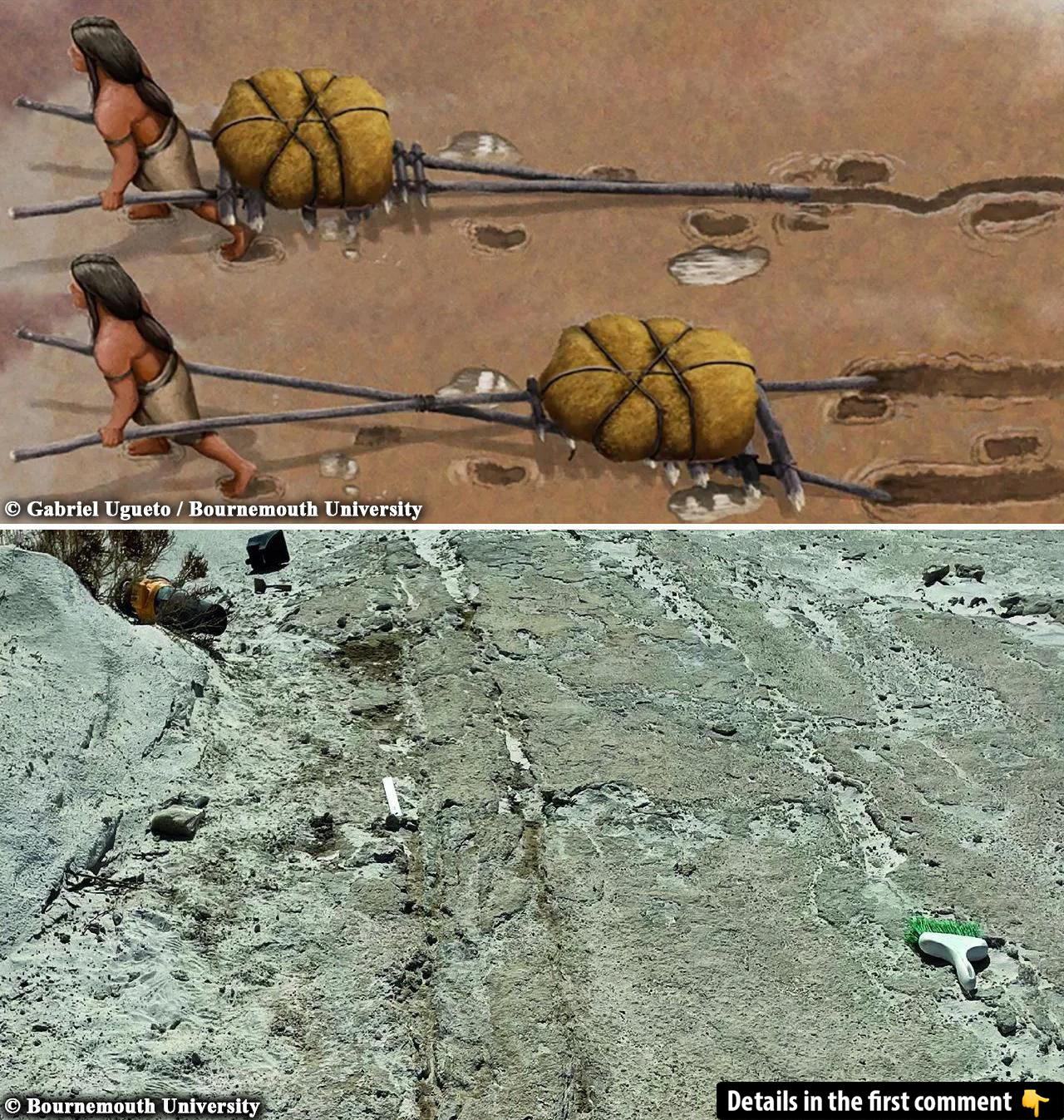In a groundbreaking discovery at White Sands National Park in New Mexico, archaeologists have uncovered ancient drag marks beside human footprints, suggesting that prehistoric humans used primitive transport technology over 20,000 years ago. This find could radically change our understanding of early human life, challenging previous assumptions about how the first settlers in North America moved heavy loads before the invention of the wheel. Led by Professor Matthew Bennett and his team from Bournemouth University, the excavation brings to light the world’s earliest evidence of a transport device—a wooden contraption known as a travois—used by the ancestors of modern Native Americans.
The White Sands Excavation: A Groundbreaking Find
The site of these remarkable discoveries is located in the heart of White Sands National Park, an area famous for its preservation of ancient footprints that span back over 23,000 years. In May 2023, during an excavation led by Professor Bennett, his team unearthed a series of drag marks on the dried mud next to ancient human footprints. The drag marks, which extended up to 50 meters (165 feet) in length, were clearly left by something being pulled across the landscape—likely a primitive form of transport. Researchers have identified these marks as evidence of a simple, yet revolutionary transport device—the travois.
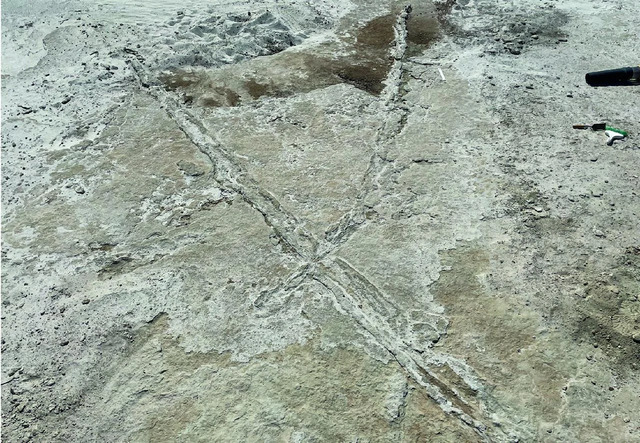
A travois is an A-shaped structure made from two wooden poles, tied together to form a basic sled-like vehicle. Indigenous groups in North America, particularly those in the Great Plains, used this design for centuries to carry goods and supplies, often pulled by dogs or horses. But what makes this discovery even more astonishing is that these drag marks, dating back over 22,000 years, suggest that such technology existed thousands of years earlier than previously thought.
Video
Check out the video on the world’s first vehicle as archaeologists uncover 22,000-year-old tracks in New Mexico – it’s a groundbreaking discovery!
The Ancient Travois: A Precursor to Modern Transport
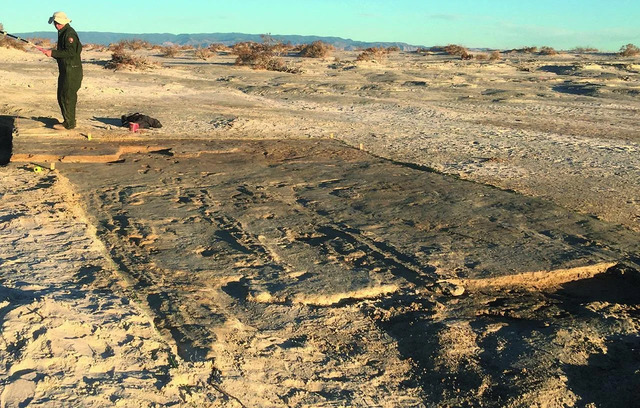
The discovery of the travois marks at White Sands suggests that early North Americans were resourceful innovators who devised ways to move heavy loads long before the invention of the wheel. The travois, while simple in design, would have been a vital tool for prehistoric people who had to transport goods across vast distances, often through rugged terrain.
The significance of this find lies not only in its age but also in its implications for our understanding of early human mobility. The travois was a precursor to more advanced transportation systems, predating wheeled vehicles by millennia. Its design, based on two poles tied together, is reminiscent of modern sleds used today for moving heavy loads across snow or ice. Early humans likely used such devices to transport food, tools, and other essentials, aiding in their migration and settlement across North America.
Drag Marks and Footprints: Decoding Ancient Human Movement

The drag marks found at White Sands are not just simple lines etched into the ground; they are a window into the past, providing insight into how early humans interacted with their environment. Alongside the drag marks, archaeologists found human footprints, which were crucial in determining that the marks were created by humans and not animals. Children’s footprints were also discovered, suggesting that they accompanied adults as they pulled the travois, much like families today walk alongside each other while carrying loads.
The discovery of these footprints alongside the drag marks indicates that early North American settlers had already developed an effective method of transporting bulky and heavy loads before they had access to domesticated animals like horses or oxen. This finding provides a glimpse into the everyday lives of the first migrants to the Americas, offering a deeper understanding of how they managed the challenges of their environment.
The Dating of the Tracks: Challenging Long-Standing Beliefs
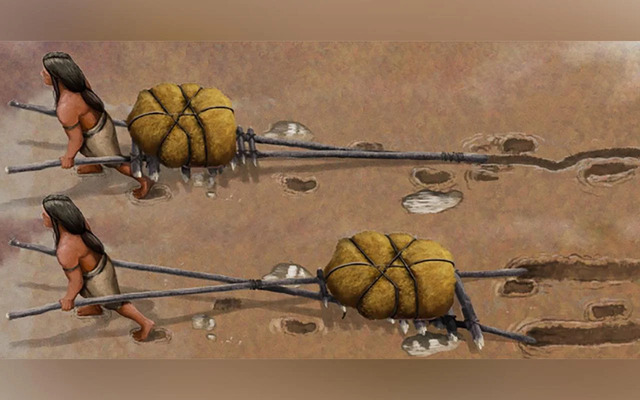
One of the most significant aspects of this discovery is its potential to rewrite the timeline of human migration into the Americas. Prior to this finding, the widely accepted theory was that humans arrived in North America around 15,000 to 16,000 years ago, likely crossing the Bering Land Bridge from Asia. However, the newly uncovered drag marks, along with footprints at White Sands that date back 23,000 years, challenge this theory by suggesting that humans may have arrived in the Americas much earlier than previously thought.
While the dating of these tracks remains a subject of debate among experts, the evidence for early transport technology remains clear. The fact that these drag marks have been preserved for over 20,000 years is a testament to the ingenuity of early humans who found ways to adapt and survive in a challenging and dynamic environment. This discovery not only pushes back the timeline of human settlement in the Americas but also highlights the advanced problem-solving skills of prehistoric peoples.
Experimental Replication: Testing the Theory
To test their findings and ensure the accuracy of their interpretations, the research team replicated the ancient drag marks using modern materials. They built their own travois, using wooden poles and dragging them across mudflats in the United Kingdom and along the Maine coast in the USA. The results of these experiments were strikingly similar to the fossilized drag marks found at White Sands, supporting the theory that the marks were indeed made by a travois-like device.
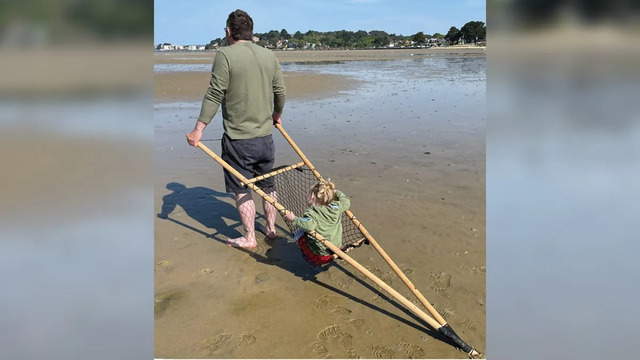
This experimental approach allowed the team to confirm that the drag marks were created by human effort and that the ancient people of North America used a simple yet effective transport method to move goods across the landscape. The successful replication of the marks provides further evidence of the practicality and efficiency of the travois as a transportation tool.
The Legacy of Prehistoric Transport: Understanding Early Life
The discovery of the travois drag marks offers more than just a glimpse into early human technology; it provides valuable insights into the lives of the first North American settlers. The ability to transport goods over long distances would have been crucial for survival, particularly for hunter-gatherer societies that relied on mobility to find food and resources. This finding sheds light on how prehistoric people adapted to their environment and developed innovative solutions to meet the challenges they faced.
Understanding the tools and technologies used by early humans is essential for piecing together the story of human migration and settlement. The travois represents a significant step forward in the evolution of transportation, laying the groundwork for more complex systems that would emerge over time. It also highlights the resourcefulness and adaptability of early North American settlers, who were able to thrive in a harsh and unforgiving environment.
Video
Watch the video on the prehistoric footprints found in New Mexico, the oldest human tracks in North America – it’s a remarkable find!
Conclusion: A Step Toward Rewriting History
The discovery of the travois drag marks at White Sands National Park is a groundbreaking find that has the potential to reshape our understanding of early human life in North America. By challenging long-held beliefs about the timeline of human settlement and shedding light on the technological innovations of prehistoric peoples, this discovery provides valuable insight into the lives of the first migrants to the Americas.
As researchers continue to study the drag marks and footprints at White Sands, they will undoubtedly uncover more clues about the daily lives of early North American settlers. These findings not only enrich our knowledge of the past but also remind us of the ingenuity and resilience of the people who came before us. The travois, a simple yet effective transport tool, stands as a testament to the resourcefulness of our ancestors and their ability to adapt to the challenges of their world.
